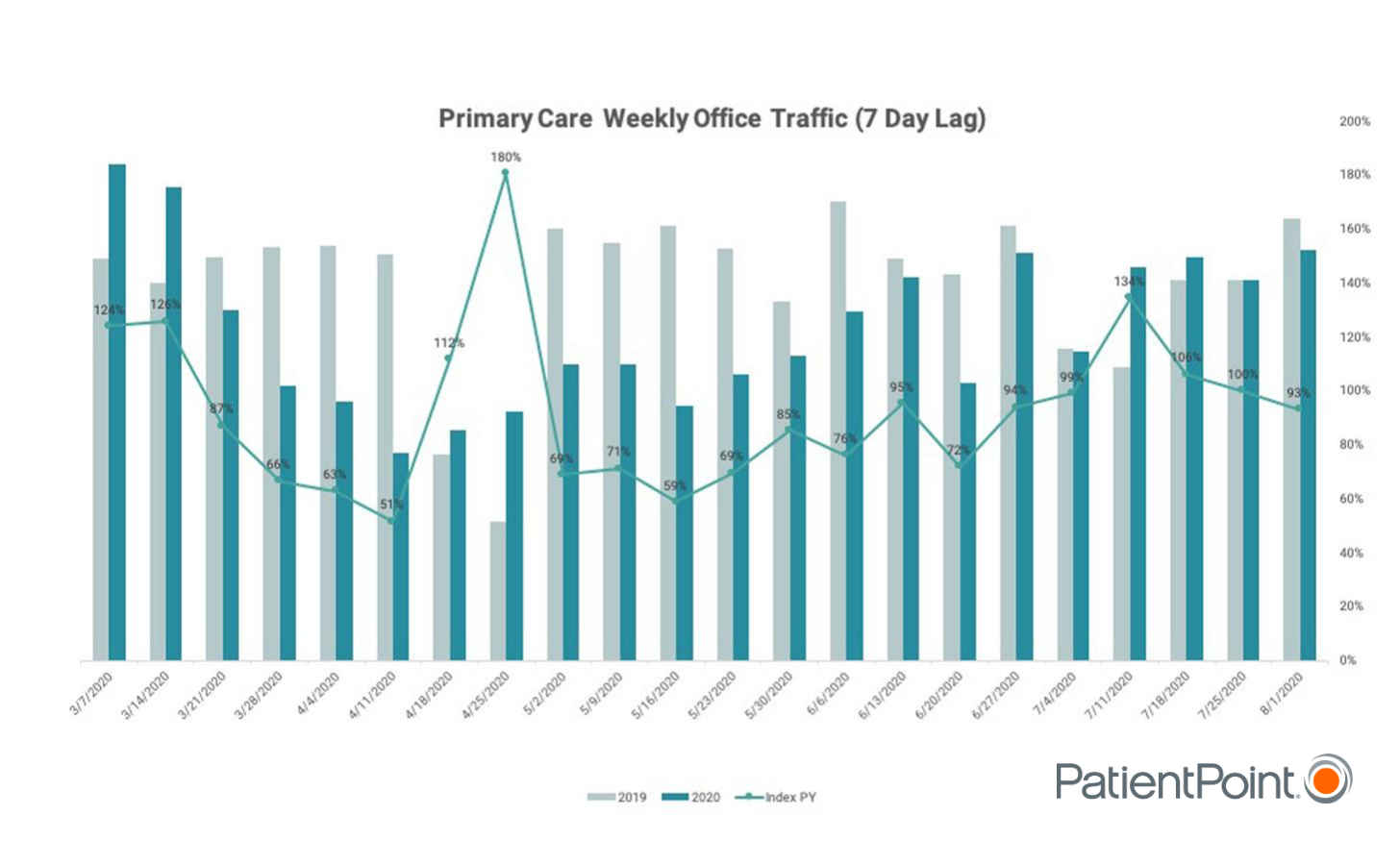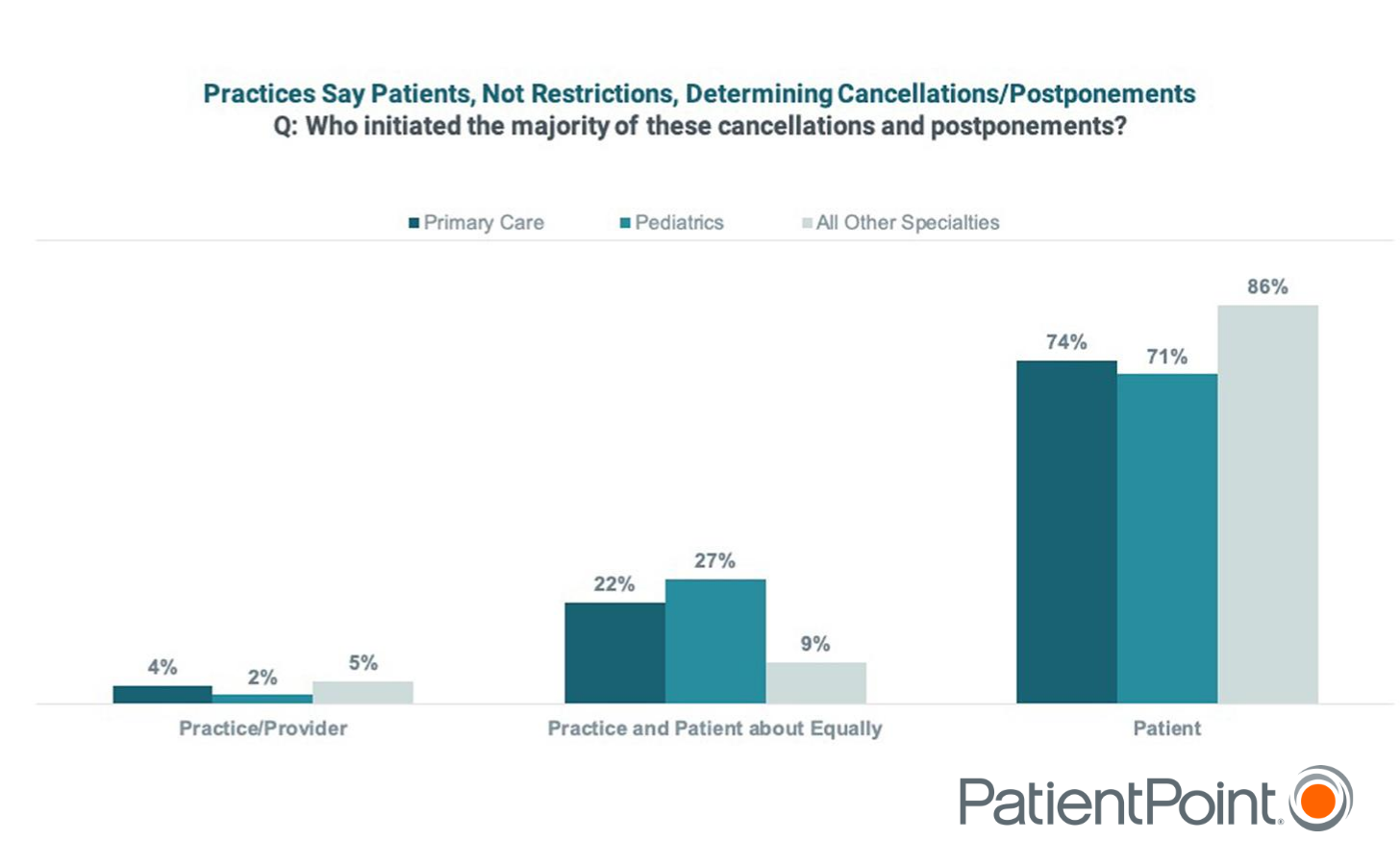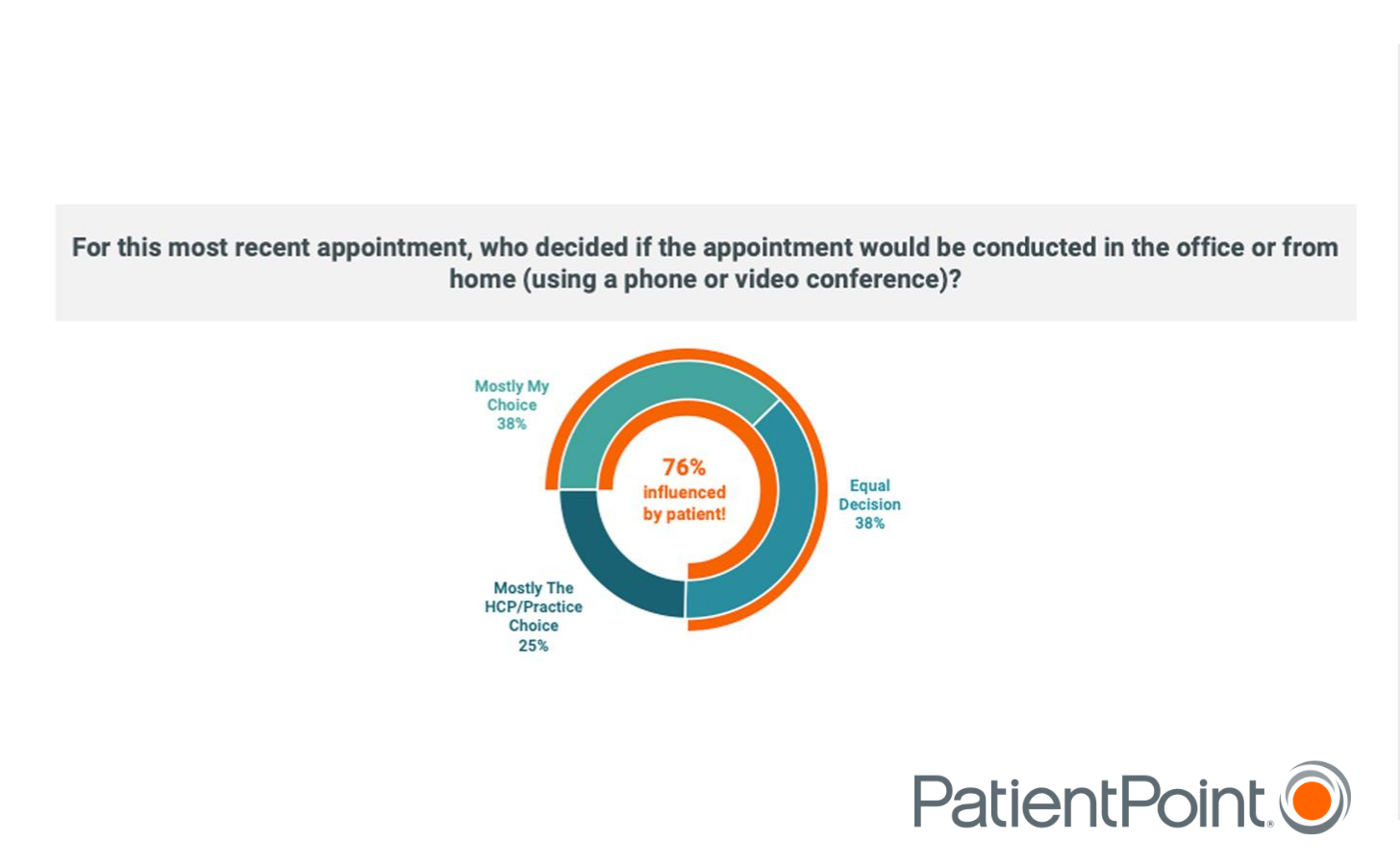The phrase “new normal” is everywhere: A quick Google search of “new normal” and “COVID” yields more than 70 million results. It’s clear that after six months of the COVID-19 pandemic, we’re all becoming more accustomed to life with COVID and the precautions that we must all take as we move about our daily lives to remain healthy and safe.
What does the “new normal” look like for patients and doctors—and how has healthcare changed since earlier in the pandemic? Over the past several months we’ve been hard at work analyzing medical claims data and talking to doctors and patients to gain insights into how COVID-19 has impacted patient care.
Here are our latest findings, according to patient-level medical claims data and the latest results of our ongoing, independent COVID-19 patient surveys as well as surveys of our PatientPoint provider partners.
1. Primary Care Continues Strong Recovery
While the impact of COVID-19 on patient traffic was significant early, patient-level medical claims data indicates a strong recovery, with volumes returning and often surpassing 2019 benchmarks. In primary care, July patient traffic was up 4% from July 2019.1

2. Telehealth Reaching Equilibrium
Telemedicine use is down from its highest point during COVID, currently comprising 10-11% of all primary care visits.1
Looking ahead, PatientPoint providers we surveyed said they expect telehealth could constitute anywhere between 9-16% of all visits.2

3. The Patient is in the Driver’s Seat
According to both practices and patients we surveyed, patients are increasingly the deciding factor when it comes to keeping an appointment and determining its format (vs. practices heeding local/national public health restrictions). In both cases, the patient is controlling the decision more than 3/4 of the time.2,3
Among Practices:

Among Patients:

1MedFuse Data by DarkMatter2bd
22020 Wave 3 Nationwide Web PatientPoint COVID-19 Practice Tracking Survey
3L Catterton/PatientPoint Consumer Survey, Wave 6

